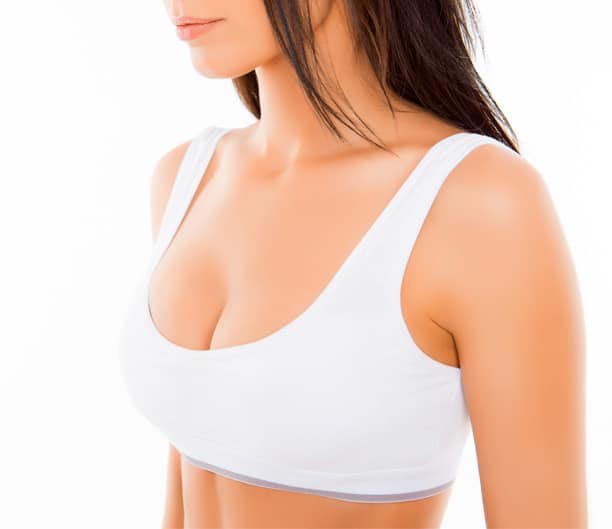Since the existence of mankind, human body has been seen as a work of art. Throughout the history, human form has been elaborately expressed by artists and sculptors. It all began in 5th century BC by the Greek sculptor Polykleitos with his bronze sculpture Doryphorus. It showed the perfectly harmonious and balanced proportions of human body.
This was followed by artistic versions of human body by various artists and sculptors. The merging of art and anatomy is perhaps most evident and glorious in the works of Leonardo da Vinci.
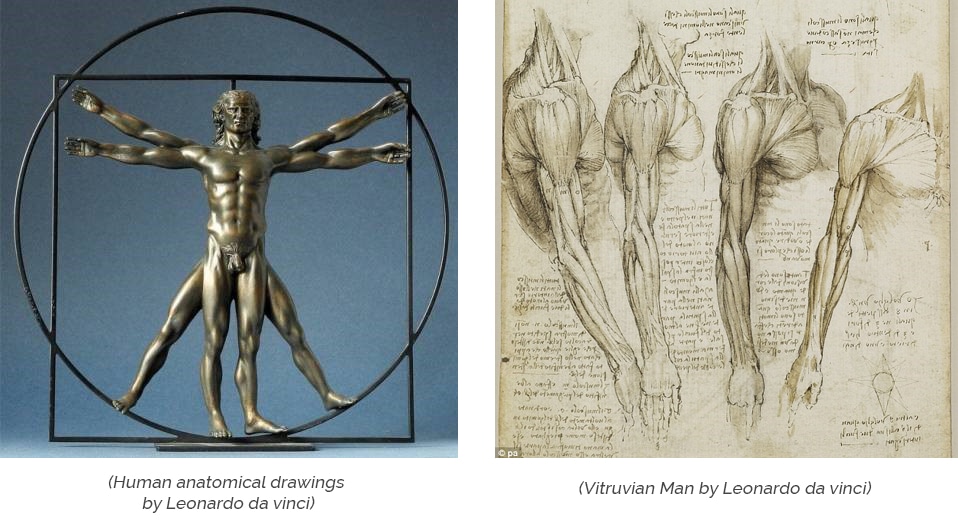
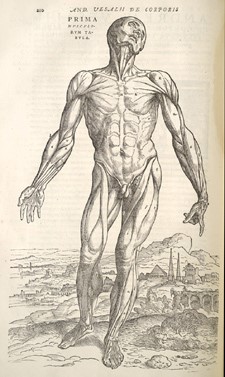
(De Humani Corporis Fabrica by Vesalius)
Michelangelo’s David represents one of the most recognized sculptures and showcases the human body in all its strength, athleticism, and youthful beauty.

(Michalengalo’s David)
It is very interesting how the ideas of art based on perception of genius artists in the past can be used with a deep knowledge of human anatomy to carve a beautiful structure in a human body through liposuction (hence the term ‘Liposculpture’)
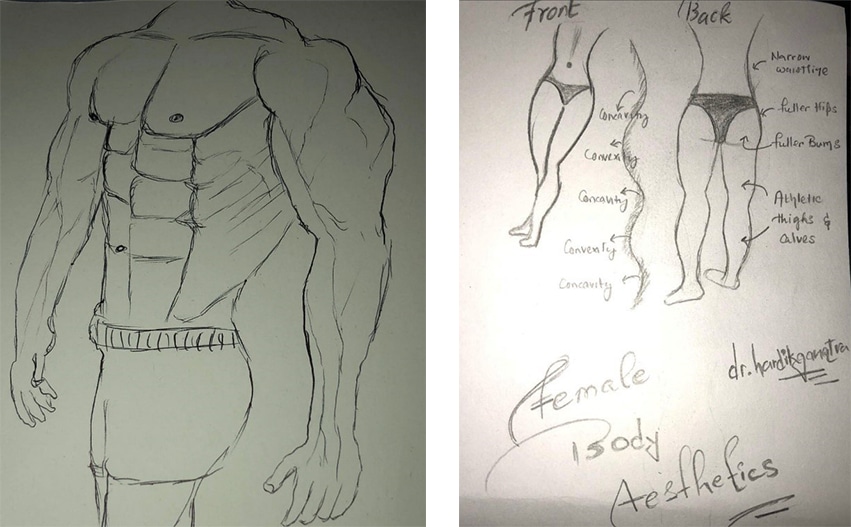
(Some of my sketches on artistic presentation of an aesthetic muscular male and female body)
Using the artistic perception from the historic times, plastic surgeons have been inspired to recreate a similar form in their surgeries. This takes liposuction or fat removal to the next level and gave rise to the concept of lipo-sculpture or 3D/4D liposuction.
APPLICATION OF ART IN SCIENCE GAVE US HIGH DEFINITION LIPOSUCTION
Liposuction isn’t a new technique and it has been done since 1980s.
The market has seen changes from traditional liposuction (manual liposuction) to the use of energy based devices like Laser, Vaser, Radiofrequency assisted and J Plasma (Plasma with Radiofrequency).
Also there have been different methods of performing liposuction like Manual Liposuction, Power-assisted liposuction, Vibration assisted Liposuction, Nutational Infrasonic Liposuction, etc.
“Using the knowledge of anatomy and infusing it in science with an artistic perspective is High definition liposuction.”
High definition Liposuction is a form of liposuction which not only removes fat excess but in addition removes fat between muscle groups accentuating the margins and the lines of light and shadows between the muscles creating a more athletic appearance.
Ref. : (VASER-Assisted High-Definition Liposculpture : Alfredo E. Hoyos, MD, John A. Millard, MD. Aesthetic Surgery Journal, Volume 27, Issue 6, November 2007, Pages 594–604)
TWO TYPICAL RESULTS OF HIGH DEFNITION LIPOSUCTION
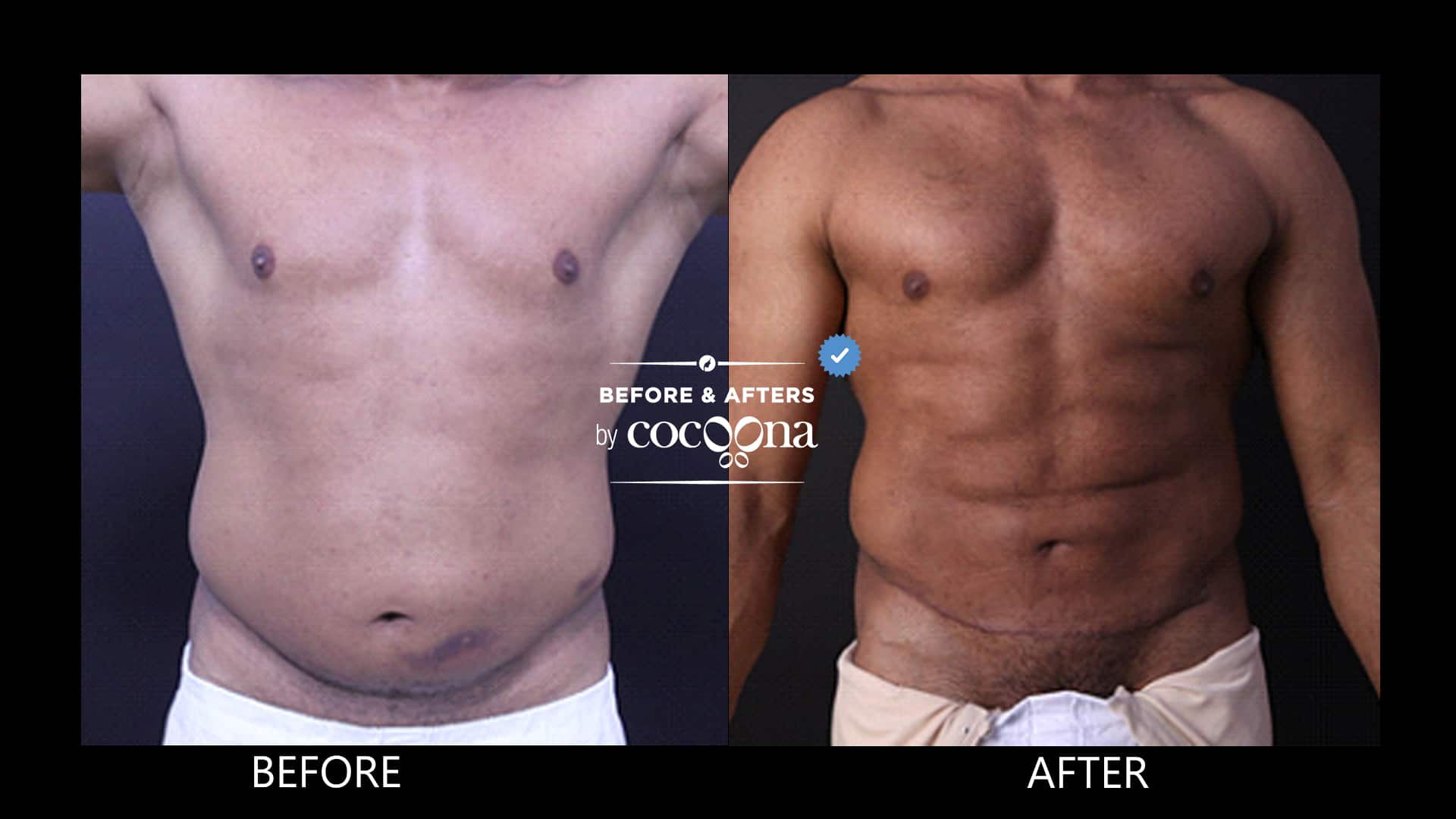
The above patient is a 40-year-old male who had stubborn resistant fat in the tummy and love handles which despite regular exercises and good diet refused to shed off.
He promised to be committed to exercise and diet. I removed 3 liters of fat from the abdomen and defined his muscles (body sculpting). Following the surgery, he started working out while recovering and here he is after 3 months.
The Six-pac abs are very prominent, and most importantly they are natural. it’s the patients own muscle, and not FAT bases packs that looks extremely fake and poor.
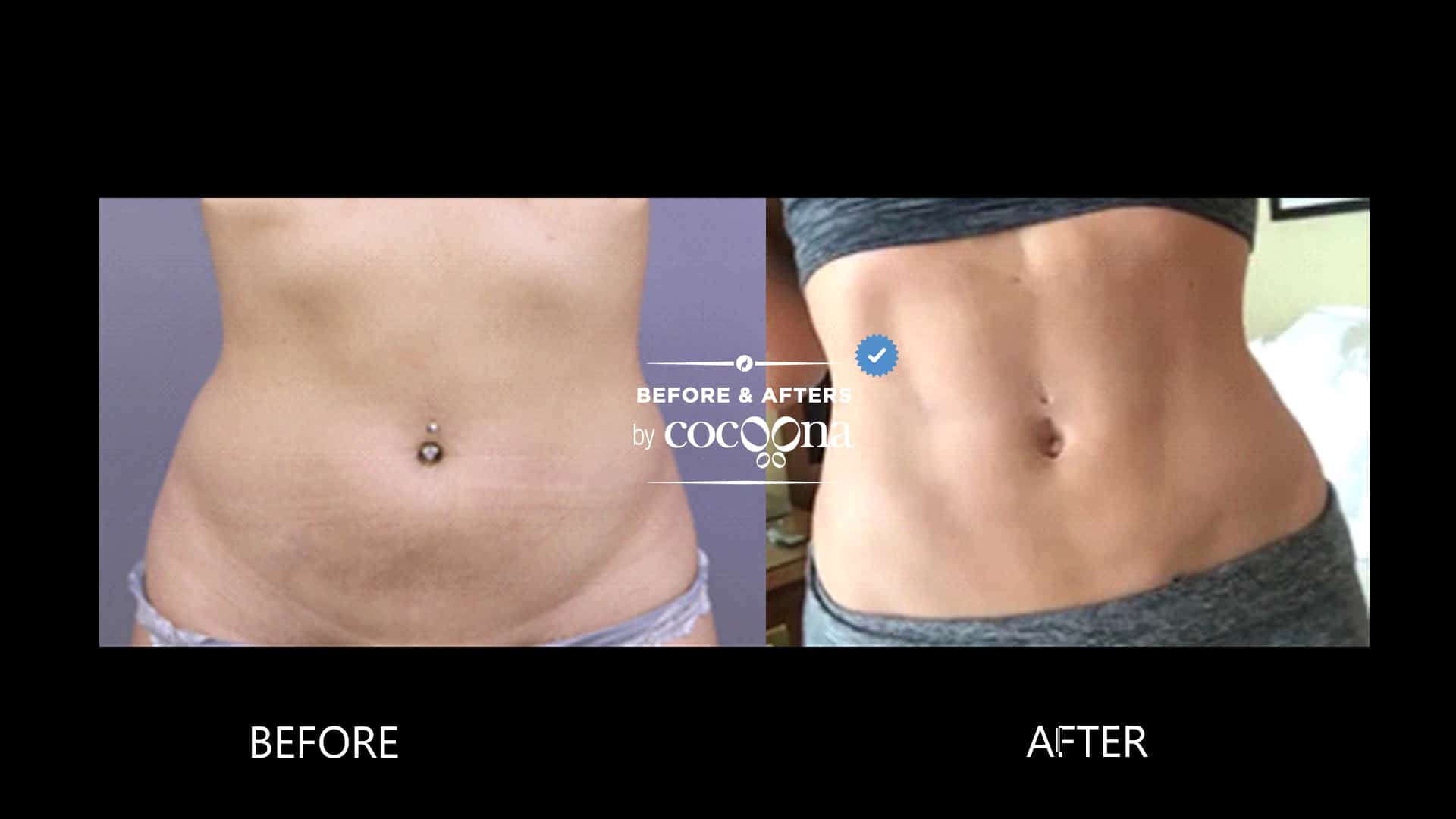
The above patient is a 25 year old female who had stubborn resistant fat in the tummy and love handles despite regular workout and good diet.
I removed 3.5 liters of fat from the abdomen and defined her muscles (body sculpting). Following the surgery, she works out 3-4 times a week, focusing mainly on her abdomen and lower body.
FAQs on Liposuction
At my practice here at Cocoona Dubai, I frequently come across patients pre-occupied by misleading information. Our duty as plastic surgeons lies in not just performing the surgery, but also to educate people about the procedure and its intricacies. I have listed some of the most common questions we as plastic surgeons encounter during our consult regarding high definition liposuction.
Who is the right candidate for high definition liposuction?
Any individual (male/female) who meets the following criteria is a good candidate:
- Low visceral fat
- Good skin elasticity
- Minimal to no excess skin
- Motivated patient committed to working on lifestyle change in terms of diet and exercise
Do I need to be muscular to get better results out from a High Definition Liposuction surgery?
I classify my patients into three categories :
- Poorly muscular: These patients need to work-out on their abdominal muscles to get the best shape after the surgery. Also need to make sure they don’t gain fat in the same area by focusing on their diet and cardio (HIIT). They typically see their 6-pack result after a longer duration. Could take 5-6 months or even more.
- Slightly muscular: Need to work-out on a regular basis and keep their diet in check. However, they tend to see the results faster and its less difficult for them to maintain their results.
- Very Muscular : These patients usually are athletes or bodybuilders, who are usually extremely cautious about their diet and exercise. They see the results the fastest and maintain them very well for a very long period. Needless to say, these patients have the best results and are a treat for any plastic surgeon.
How do I do Liposuction or What technique do I use?
I infiltrate tumescent fluid in the fatty layer to numb the area. This helps in post-operative pain control. The fluid also helps in vasoconstriction which reduces the amount of blood loss during the procedure.
I use vaser to help me in emulsification of fat and skin retraction which in the end translates to a well sculpted slimmer look of the body.
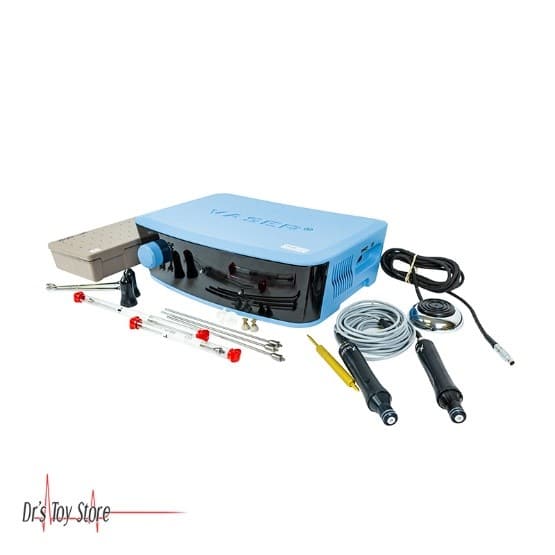
This can also be done using laser, J plasma or other energy-based devices. No single device has been shown to be more superior than the other for this purpose.
However, worldwide Vaser is the commonest tool used for high definition liposuction.
Once liposuction is done and the patient is slimmed down in an aesthetic way, etching is done using special cannulas.
The end result is a combination of various factors like surgeon’s skills, technology that’s used, post-operative protocol and a healthy lifestyle on the part of patient.
Is the liposuction technique different for males and females?
Muscle definition (or Etching) is commonly done in the midline above the belly button (Linea alba) and by the sides of the two rectus muscles (Linea semilunaris) in females.
Most females don’t prefer the six-pack look. They like a softer look.
Males usually prefer the six-pack look. I have had few female clients in my practice requesting the same. Hence etching in them besides Linea alba and Linea semilunaris is also done in the transverse lines to create the packs. (Transverse inscriptions)
How do I make the results of the liposuction long lasting (or sustainable)?
I do not prefer leaving fat over the muscles to create Abs as this fat has the potential to grow in later life leading to an abnormal bulge.
Remember ‘Abs are muscles not fat’.
Leaving fat or injecting fat under the muscle to make it look like abs only creates “Fat packs” or “Fake packs”.
Also, the patient is strictly advised to adopt a heathy lifestyle with clean diet and regular exercise to make the rectus muscle grow bigger (Ab muscle hypertrophy).
What is the post-operative care after getting liposuction?
Patient is advised to go for manual lymphatic drainage massages from day 2 or 3, after the surgery to help swelling go off faster and also to aid in skin retraction.
Pressure garment is given on the second day after surgery while Foam dressing is given to be placed along with the garment from day 3 or 4, which helps in avoiding swelling in the etched areas and preserves the etching that was created during the surgery. This is typically given for about 2-3 weeks.
Pressure garment is advised for 1.5-2 months following the surgery. This duration could be shorter or longer depending on how the patient is healing.
Follow ups are recommended at 1 week, 2 weeks, 1 month, 2 months, 3 months, 6 months and 1 year after the surgery.
I am strict with my follow ups to ensure high patient satisfaction and long-lasting good results.
When do my patients see results after liposuction?
Typically, patients see good results between 2-3 months.
Different patients swell and heal differently, but most of them see a good result by 3 months and that keeps improving till about 5-6 months.
Results also depend on patient compliance in terms of diet and exercise.
When can a patient start exercising after the liposuction surgery?
My patients start light exercises from 2nd week after the liposuction surgery and progressively increase the intensity every week.
Patients usually begin their routine exercises (workout, dance, Zumba, Pilates, etc.) in a month’s time.
What exercises do I recommend after the liposuction surgery?
I usually customize an exercise plan for each client considering their goals, the area that I have worked on (abs, glutes, shoulders, chest, back, etc.) and looking at how much time and effort they are ready to put in.
I have been trained by some finest bodybuilders in the world and my experience in bodybuilding helps me shape up my clients post operatively.
Sample exercise plan
At 1 week – Long distance walking, walking on a treadmill
At 2 weeks – Running on a treadmill, Mild intensity exercises on uninvolved areas (like exercise for arms and legs when only tummy liposuction is done)
At 3 weeks – Moderate intensity exercises on uninvolved areas, Passive exercises for operated areas (like Planks for abdomen, stretch and hold for arms, buttocks)
At 4 weeks – Moderate to severe intensity exercises for all parts
More about Myself
I am a Board-certified plastic surgeon with a 7 years’ experience in plastic surgery. I perform both aesthetic surgical and non-surgical procedures.
I like to scribble, sketch, sculpt, inject, cut and stitch.
My hands are my biggest asset and I try my best to create something beautiful with them, at or out of work.
KEY INTERESTS
Surgical Procedures
Body Contouring
- Vaser / Laser Liposuction
- Slim Down Liposuction
- 3D / 4D liposuction (6 packs liposuction)
- Tummy tuck
- Brazilian Butt Lift
- Arm Lift / Thigh Lift
Facial Surgeries
- Blepharoplasty
- Buccal fat pad removal (Bichectomy)
- Face Liposuction
- Face fat grafting
Breast Surgeries
- Breast Augmentation (Implants/Fat transfer)
- Breast Lift / Breast Reduction
Genital Surgeries
- Labiaplasty
- Labia Majora Fat grafting
- Vaginoplasty
Non Surgical Procedures
- Botox
- Fillers (face/hands/buttocks)
- Platelet Rich Plasma (PRP)
- Microneedling
- Fractional CO2 Laser
- Mesotherapy



